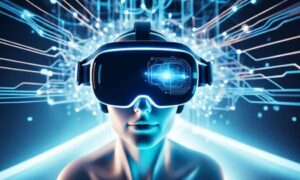The fifth generation of wireless technology, commonly known as 5G, has been making waves in the tech world, promising to revolutionize the way we interact with consumer technology. With its unprecedented speed, low latency, and massive connectivity capabilities, 5G is set to transform our daily lives in ways we could only dream of a few years ago. In this article, we will explore the profound impact of 5G on consumer technology, from smartphones to smart cities, highlighting the potential benefits and challenges this new era of connectivity brings.
Introduction
The Need for Speed
One of the most significant advantages of 5G technology is its blazing-fast speeds. Unlike its predecessor, 4G, which offered download speeds of up to 100 Mbps, 5G promises speeds up to 20 Gbps or even higher. This dramatic increase in speed will have a transformative effect on various aspects of consumer technology.
Enhanced Mobile Experience: Smartphones and mobile devices will be among the first to benefit from 5G. With faster download and upload speeds, users will experience smoother streaming, quicker app downloads, and seamless video calls. Augmented reality (AR) and virtual reality (VR) applications will also become more immersive, as the low latency of 5G reduces lag and latency issues.
Internet of Things (IoT): 5G’s high-speed and low latency make it ideal for connecting and managing IoT devices. From smart thermostats and security cameras to connected cars and healthcare wearables, 5G will enable real-time communication between devices, leading to more efficient and automated systems.
Remote Work and Education: The COVID-19 pandemic accelerated the adoption of remote work and online learning. 5G will further improve the quality of virtual meetings, webinars, and online classes, making remote collaboration more seamless and productive.
Gaming: Gamers can expect a revolution in cloud gaming with 5G. Low latency and high speeds will enable gamers to stream and play resource-intensive games from the cloud without the need for expensive gaming rigs.
Media and Entertainment: Streaming services like Netflix and YouTube will offer higher-quality video streaming with less buffering, thanks to 5G. Additionally, the increased bandwidth will support 4K and 8K content, enhancing the overall viewing experience.
Smarter Devices
5G technology is not just about speed; it’s also about enabling smarter, more connected devices. Here are some areas where consumers will see a significant impact:
Autonomous Vehicles: Self-driving cars will rely heavily on 5G connectivity to communicate with other vehicles, traffic infrastructure, and cloud-based systems. This will make transportation safer, more efficient, and more convenient.
Healthcare: Telemedicine will become more effective with 5G. Doctors can remotely monitor patients in real-time, and medical devices can transmit data instantly, improving patient care.
Manufacturing: The manufacturing industry will benefit from 5G’s ability to connect and control robots and machines with low latency. This will lead to more efficient and flexible production processes.
Retail: Retailers can offer personalized shopping experiences through augmented reality and virtual reality applications powered by 5G. Customers can virtually try on clothes or see how furniture fits in their homes before making a purchase.
Everywhere Connectivity
5G is not just limited to urban areas; it aims to provide ubiquitous connectivity, even in remote and underserved regions. Here’s how 5G will ensure connectivity everywhere:
Rural Connectivity: 5G’s ability to cover large areas with fewer cell towers makes it cost-effective for rural connectivity. This means that people in remote areas will have access to high-speed internet, bridging the digital divide.
Emergency Services: Faster and more reliable communication is crucial for emergency services. 5G will enable first responders to share real-time data, video feeds, and location information, improving their ability to save lives.
Smart Cities: 5G will play a pivotal role in the development of smart cities. From traffic management to waste collection, connected sensors and devices will make urban life more efficient and sustainable.
Challenges and Considerations
While the potential of 5G is vast, there are also challenges and considerations to address:
Infrastructure: Deploying 5G infrastructure requires significant investment, including building more cell towers and upgrading existing networks. This can be a slow and expensive process.
Security: As more devices become connected, the risk of cyberattacks and data breaches increases. Ensuring the security of 5G networks and devices will be paramount.
Privacy: With increased connectivity comes the potential for more data collection. Striking a balance between convenience and privacy will be an ongoing challenge.
Regulation: Governments and regulatory bodies will need to adapt to the 5G era, addressing issues like spectrum allocation, net neutrality, and privacy regulations.
Conclusion
The impact of 5G on consumer technology is nothing short of revolutionary. With faster speeds, smarter devices, and ubiquitous connectivity, 5G will usher in a new era of innovation and convenience. However, it’s essential to address the challenges and considerations that come with this technology to ensure a safe and secure digital future for all. As 5G continues to roll out globally, consumers can look forward to a world where technology is not just faster but also smarter and everywhere.

































